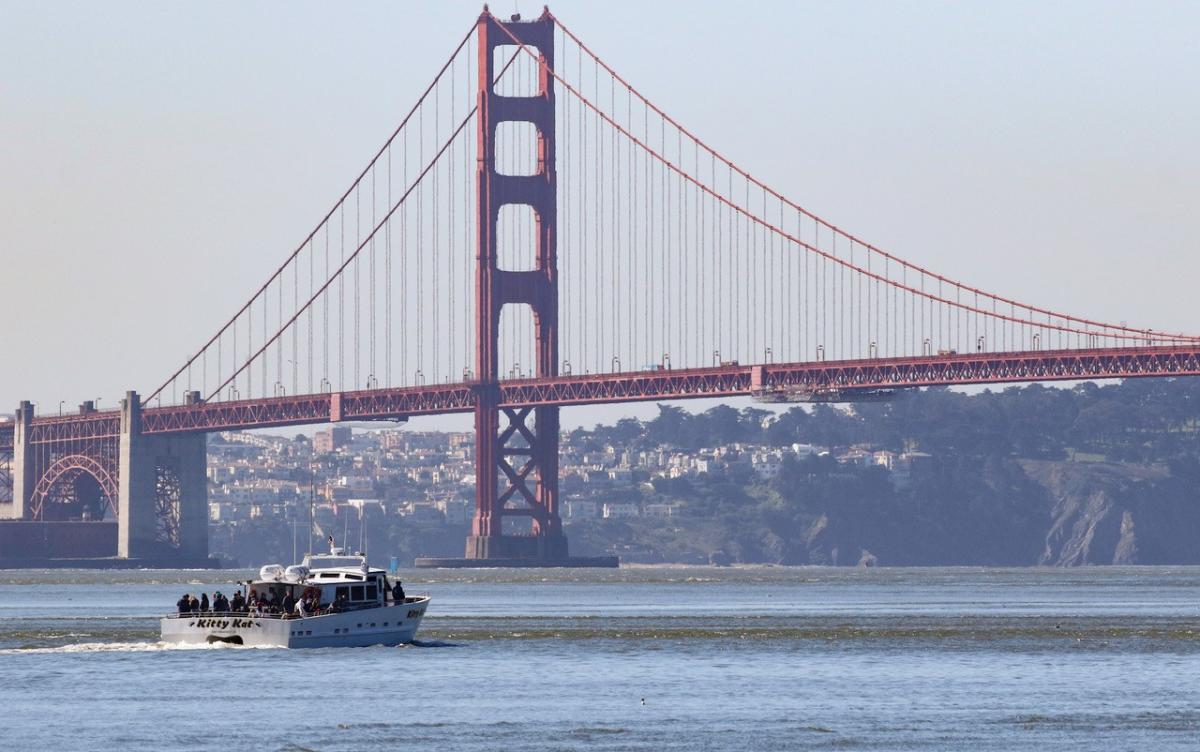One of Fisherman’s Wharf’s most memorable experiences is a whale watching tour of the San Francisco Bay, and this time of year, you don’t have to travel far to see a dramatic spout or a powerful fluke (or tail fin) rising above the water.
Woman-owned business San Francisco Whale Tours is a popular choice for a lively, 2.5-hour cruise around the Golden Gate Bridge aboard a 65-foot catamaran named “Kitty Kat” owned and operated by Kat and Joe Nazar and their crew of seasoned naturalists.
“When you see a spout, shout it out,” said Lead Naturalist Michael Pierson of San Francisco Whale Tours, who has spent a lifetime compiling information about all things nature.
Within minutes, a gray whale spout surfaces at 3 o’clock where the bay meets the Pacific Ocean.
“It’s all about the 4 Bs of whale watching folks,” said Pierson. “Blow, breach, back, and birds.”
The blow is informally referred to as “whale snot” since it includes the lubricants in a whale's lungs and nasal tracts, and scientists can learn a lot from the substances in whale blow. In fact, one researcher developed a special tool to do just that: a drone dubbed SnotBot.
The breach is when most or all the whale's body leaves the water. Gray and humpback whales breach for several reasons: to feed, play, and help rid themselves of annoying parasites that may cause itching to their sensitive skin.




